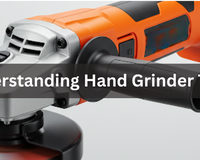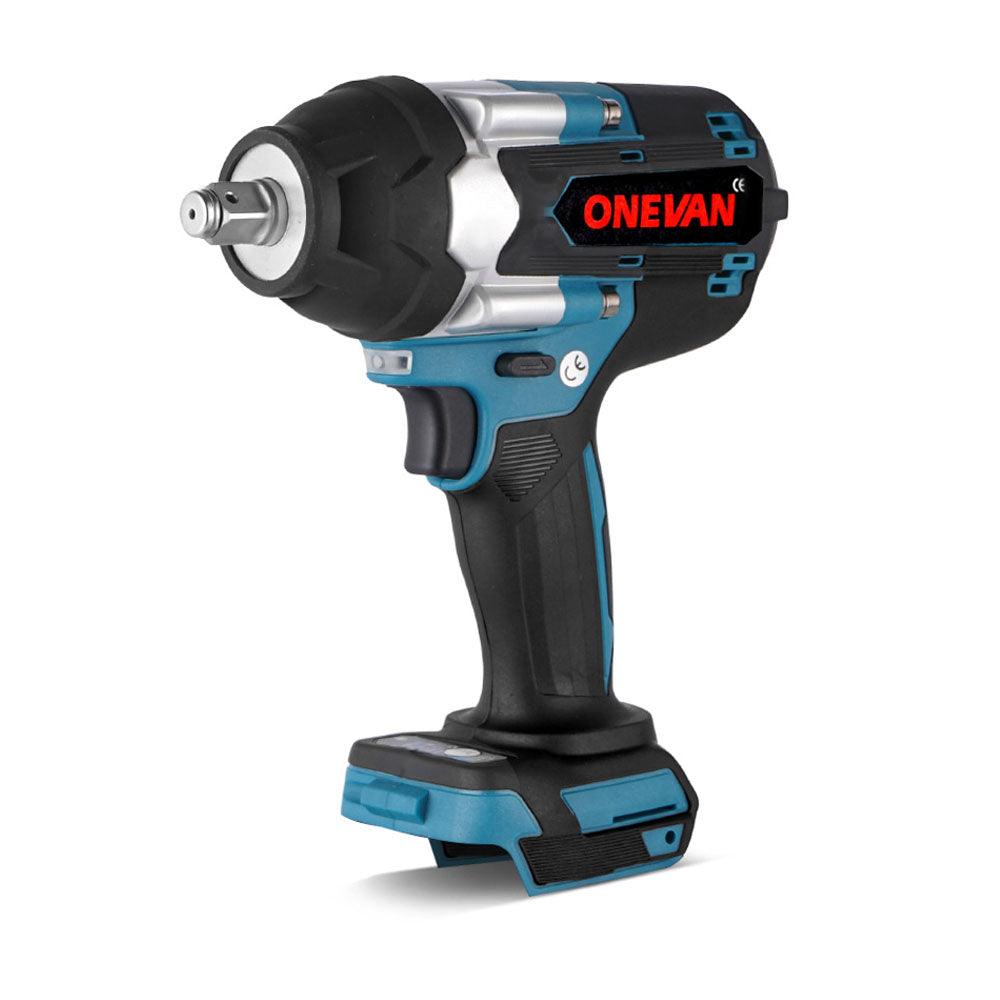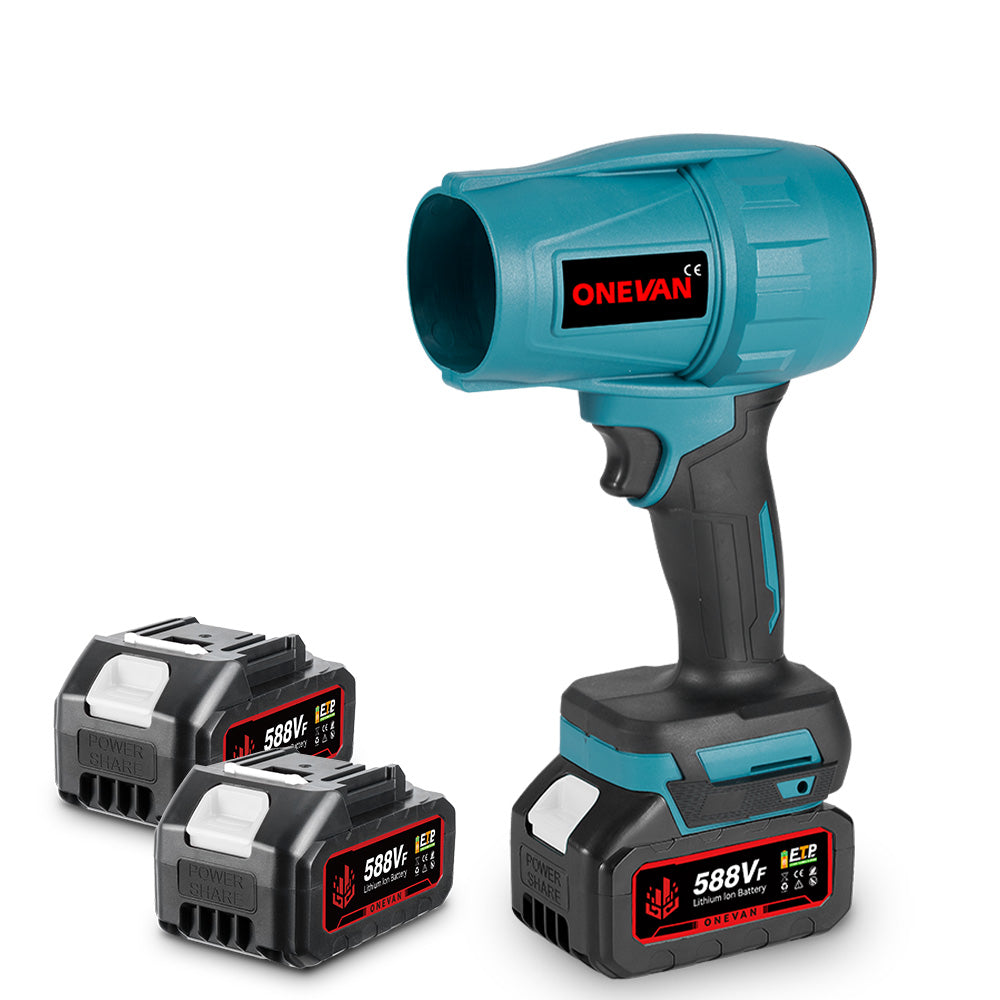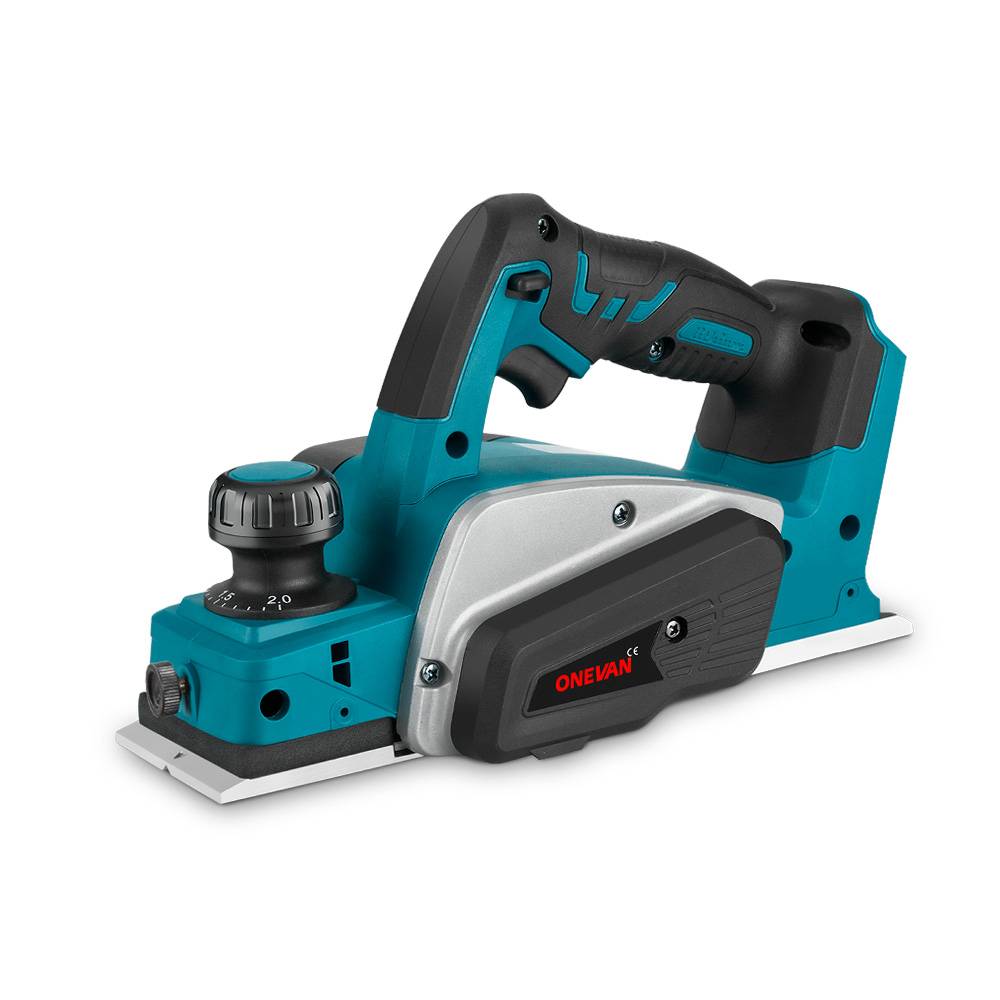Frustrated by overgrown branches and tired of struggling with a hand saw? Chainsaws are the answer, but not just any chainsaw. The size you choose makes a huge difference in how easy and safe your cutting tasks become.
If you're purchasing a new chain for your saw, you need to know its length. The easiest way to do that is to look right at the bar.
This guide will help you navigate the world of chainsaw sizes. We are going to explain why selecting the perfect size matters and what factors play a decisive role when buying a cutting machine.
1. Understanding Chainsaw Sizes
What is Chainsaw Size and Why It Matters?
- Guide bar length
- Engine power
These both are the two defining characteristics of size. The guide bar is the long, metallic bar around which the chain rotates. The engine power determines how much muscle the saw has to push that chain.
Worse, it might force you to use awkward positions, increasing the risk of accidents. Conversely, using an oversized chainsaw for small jobs can be unnecessarily cumbersome and potentially hazardous.
How to Determine the Right Chainsaw Size by Guide Bar Length?
 Think of the guide bar as a ruler. The longer the bar, the bigger the wood it can tackle. Here's a quick guide
Think of the guide bar as a ruler. The longer the bar, the bigger the wood it can tackle. Here's a quick guide
- Short bars (10-14 inches): It can effortlessly handle limbing, pruning, and small jobs. Indeed, a great option for beginners.
- Medium bars (16-20 inches): Best for small trees, cutting firewood, and general yard work.
- Long bars (20+ inches): Excellent for larger trees and firewood processing. However, you must be pro to maintain safety.
Understanding How Guide Bar Length Affects Chainsaw Cutting Capacity
The guide bar length plays a direct role in determining the chainsaw's capacity to handle various wood diameters and types. Here's the logic:- Imagine the guide bar as a track for the chain. A longer track lets the chain make a deeper cut in one go. So, a longer bar can handle wider logs in a single pass.
- Think about thicker branches or hardwood. These require more "bite" from the chain. A longer bar accommodates a longer chain, which means more cutting teeth are engaged, resulting in a cleaner and more efficient cut through tough wood.
2. Key Factors in Choosing the Right Chainsaw Size
Picking the perfect chainsaw isn't just about the guide bar. Here's what else to consider:
Wood Types and Cutting Tasks on Chainsaw Size Selection
Just as you wouldn't use the same tool for cutting a twig and a telephone pole, the choice of chainsaw varies based on the task.
- Softwood like pine/spruce: These woods are easy to cut, but using a smaller chainsaw for pruning or bucking firewood might result in less efficient cutting.
- Hardwood like oak or maple: Denser wood requires more power. A larger chainsaw with a longer bar will facilitate a more efficient and safer cutting process.
Also, consider the specific requirements of the task.
- Pruning branches: A small, lightweight chainsaw with a short bar lets you maneuver easily around trees and shrubs.
- Felling trees: Bigger trees require a bigger saw. A longer bar allows for deeper cuts in one pass, bringing down the tree efficiently.
- Bucking firewood: Here, a balance is key. A medium-sized chainsaw equipped with a sound bar length assists in cutting logs to size without struggling.
The Role of User Experience and Physical Strength in Chainsaw Selection
Chainsaws are powerful tools, and the user's level of experience is a significant consideration.
- Beginners: Opt for a smaller, lighter chainsaw. It'll be easier to control and less tiring to use.
- Experienced users: You can handle a larger chainsaw with more confidence.
Strength is also a factor; avoid choosing a chainsaw that is excessively heavy, as it can lead to fatigue and increase the risk of errors.
Chainsaw Size Based on Frequency and Duration of Use
How often will you use the chainsaw?
- Occasional use: A smaller chainsaw is a good choice for beginners to trim branches.
- Frequent use: For a regular firewood pro, a medium-sized chainsaw can make the tasks as smooth as butter.
Think about how long each cutting session will last.
- Short bursts: A smaller chainsaw is manageable for quick tasks.
- Longer jobs: A medium-sized chainsaw will be more comfortable for extended use.
The Importance of Weight and Ergonomics in Chainsaw Selection
The weight of the chainsaw is a critical consideration. A heavy model can quickly lead to fatigue, which may compromise your control and safety.
Ergonomics are key too. A chainsaw should be comfortable to hold and operate. Why is this important? Because it will make a significant impact in reducing fatigue and preventing injuries.
3. Chainsaw Size Guidance for Small-Scale Tasks and Home Use
Ideal Chainsaw Sizes for Pruning and Limbing:
- Chainsaw Size: Think compact! A 10-14-inch guide bar is your perfect partner for this job.
- Why? One-handed operation is a breeze with this size, letting you maneuver around branches and shrubs with confidence. Plus, the lighter weight means less fatigue for those smaller cutting tasks.
- Consider the product:ONEVAN 12" Brushless Cordless Electric Chainsaw
Best Chainsaw Sizes for Cutting Small Trees in Home Landscapes:
- Chainsaw Size: A 16-18 inch bar length hits the sweet spot.
- Why? This size offers a nice bump in cutting power for taking down smaller trees (up to 12 inches in diameter) without feeling like you're wrestling a beast. It's a good balance for occasional jobs around the house.
- Consider the product: NEVAN 16" Brushless Cordless Electric Chainsaw
4. Chainsaw Size Guidance for Medium-Scale Tasks and Farm Use
Ideal Chainsaw Sizes for Cutting Firewood:
- Chainsaw Size: A medium-sized chainsaw with an 18-20 inch bar can perform seamlessly for firewood activities.
- Why? Has the power to get most firewood tasks done at once, letting you cut through logs in one swipe. This one is also not too heavy or large, which means it is quite convenient. Hence, it is suitable for long firewood processing sessions.
Best Chainsaw Sizes for Trimming Medium-Sized Trees on Farms:
- Chainsaw Size: A chainsaw with a 16-20 inch bar length is a pretty decent choice for farm tasks.
- Why? This size enables you to trim both the smaller branches and the limbs with a diameter of up to 16 inches. It is moderately powerful and very easy to manoeuvre, thus suitable for trimming within your farm.
- Consider the product: NEVAN 16" Brushless Cordless Electric Chainsaw
5. Chainsaw Size Guidance for Large-Scale Tasks and Professional Use
Ideal Chainsaw Sizes for Felling Large Trees:
- Chainsaw Size: This is strictly pro territory! Go for a chainsaw with a 20+ inch bar length.
- Why? Serious power and cutting depth are key for taking down large trees (anything over 18 inches in diameter) safely and efficiently. Remember, experience and proper training are essential when working with such powerful tools.
Best Chainsaw Size Recommendations for Forestry Work and Professional Tasks:
- Chainsaw Size: Best to cut large trees; professionals often require a 20+ inch bar length for flawless work.
- Why? These chainsaws are significantly powerful and come with maximum cutting force. You can effortlessly handle commercial applications like large-scale tree felling and other professional jobs.
6. Chainsaw Types (Gas vs. Electric)
Chainsaws are compelling option for domestic or commercial activities. However, electric chainsaws are good for small-scale tasks. When working with thin branches and bushes or even preparing wood for the fireplace, a 1200 W model is sufficient. The electric chain saw is both quiet and light, making it more comfortable for you to work with.
Simultaneously, if you need it to cut thick trees go and get a 2400 W model. A gasoline chainsaw delivers optimum results in the fields and forest. Both variants have their own strengths and weaknesses, so buying the right model directly depends on your requirements.
Gas Chainsaws
Gas-powered chainsaws deliver excellent cutting power thanks to their combustion engines. You will get:
- Heavy-duty performance: You can fell large trees and cut thick hardwood.
- Fuel flexibility: Gas chainsaws run on gasoline, which is readily available at most gas stations. They have more runtime than electric chainsaws.
- Portability: No need to worry about cords or batteries. Gas chainsaws can be used in remote locations.
However, gas chainsaws also come with some drawbacks:
- Maintenance: Regular maintenance is necessary. These are oil changing, spark plug replacements, and air filter cleaning.
- Emissions: Gas engines contribute to air pollution. Consider eco-friendly fuel options such as cordless chainsaws.
- Noise: Gas chainsaws generate a lot of noise. You must use ear protection.
Gas Chainsaw Size Matters:
- Smaller gas chainsaws (14-16 inch bars): More portable, good for limbing and light cutting tasks. Lower power might limit their effectiveness for bigger jobs.
- Medium gas chainsaws (16-20 inch bars): These chainsaws have good power and are easy to carry. They are good for felling small trees/ firewood and routine yard work.
- Large gas chainsaws (20+ inch bars): They are best for cutting large trees and heavy-duty logging.
Remote Location Usage: Gas chainsaws are the clear winner for remote locations thanks to their portability and fuel flexibility. Just remember to bring extra fuel and basic maintenance tools for extended use.
Electric Chainsaws
Electric chainsaws are popular due to their convenience and lower maintenance needs. They are available in two main varieties:
- Corded electric chainsaws: They provide continuous power, but you are bound to an outlet.
- Battery-powered chainsaws: Cordless and convenient, they are easy to carry and do not require any power outlet. However, for longer operations, get an extra battery with you.
Below are their pros and cons:
Advantages:
- Quiet operation: Electric motors make less noise compared to gas engines.
- Lower maintenance: No need for oil changes or spark plug replacements.
- Environmentally friendly: Electric chainsaws generate zero emissions.
Disadvantages:
- Limited power: Compared to gas chainsaws, electric models are built for low to medium-duty tasks.
- Corded models: Restricted by the length of the cord, limiting your cutting range.
- Battery runtime: Battery-powered chainsaws have limited runtime compared to gas.
Electric Chainsaw Size:
- Small electric chainsaws (10-14 inch bars): Ideal for light tasks like pruning and trimming branches.
- Medium electric chainsaws (14-18 inch bars): Can handle some light firewood cutting and small tree work.
7. Chainsaw Maintenance Tips for Enhanced Performance and Longevity

Blade Sharpening:
Regularly sharpen the chain using a sharpening file or seek professional sharpening services to maintain optimal cutting performance.
Keep Your Chainsaw Clean:
After each use, you need to perform the following tasks:
- clean the bar groove
- chain sprocket
- and air filter to prevent overheating and clogging
Using a compressed air hose or brush is recommended for effective cleaning.
Maintain Proper Oil Levels:
Check the automatic oiler reservoir before each use and top up with suitable oil to reduce friction and wear. Refer to the manual for recommended oil type and viscosity.
Regularly Inspect and Clean Spark Plug:
Monitor the spark plug for wear and clean it with a wire brush. If it is damaged, get it replaced
Air Filter Maintenance:
Clean or replace the air filter as per manufacturer recommendations to prevent airflow obstruction.
Fuel System Flushing (For Gas Chainsaws):
Use a fuel system cleaner periodically to prevent carburettor and fuel lines clogging.
Secure Nuts and Bolts:
Regularly check and tighten nuts and bolts to prevent vibration-induced weakening. By doing this, you can ensure safe operation and avoid component disengagement.
8. Conclusion
We have explained everything regarding the right chainsaw size! However, power and size depend on your needs. Smaller tasks like pruning or trimming call for compact gas or electric chainsaws. Medium-scale jobs like firewood or trimming medium trees benefit from medium-sized gas or electric options. It is important to ensure safety and proper training. Remember, routine maintenance keeps any chainsaw running smoothly!
9. FAQs
1. What is an ideal size of chainsaw for a homeowner?
A bar length of between 14 to 20 inches is good for a homeowner. The best size depends on the job you are going to do. In residential areas, with less trimming, a 14-inch chain saw is sufficient to complete the small jobs. Subsequently, to cut firewood or handle large trees require a 16-inch to 20-inch chain saw.
2. What is the recommended tree diameter with an 18-inch chainsaw?
You can effortlessly cut through a branch/trunk of a specific diameter with a chainsaw. This is both safe and convenient to use a chainsaw especially with a bar length one inch longer than the diameter of the wood. Therefore, with proper skills, an 18-inch chainsaw could be used to cut trees with a diameter of 14-16 inches.
3. What is the recommended tree diameter with an 20-inch chainsaw?
Just like the 18-inch rule, a 20-inch chainsaw is suitable for trees with a diameter of between 16-18 inches. Of course, these are only approximate values. Simultaneously, if the tree is very large, you need to do multiple cuts. You’ll have to incorporate a more powerful saw for safety.
4. What is the best size for me- 14 or 16-inch chainsaw?
A 14 inch chainsaw is more light and convenient to use and wield around and is good for:
- Delimbing
- Pruning
- And taking down small trees.
A 16-inch chainsaw has a slightly higher cutting capacity suitable for firewood or cutting of small to moderate-sized trees.
5. What is the recommended tree diameter with an 16-inch chainsaw?
Following the safety recommendation, a 16-inch chainsaw is suitable for trees up to 12-14 inches in diameter. For larger trees, a longer bar or a more powerful chainsaw is recommended to get the best results in minimum time.
6. What is the standard chainsaw chain size?
There is no such thing as the most common size, simply because chainsaw chains have different pitches – distances between the chain link – and gauges – thickness of drive links. The exact size varies with the kind of chainsaw and the job that it will be used for. That is why it has to be mentioned that the size of the chain that has to be used on the chainsaw depends on your model.
7. What chainsaw chains do professionals use?
There are high-quality chains for cutting purposes, which professionals use for the intended tasks. These chains may not be the same as the homeowner-grade chains and may focus on such aspects as durability, high cutting speed, or minimal vibration.
8. What chainsaw chain cuts the fastest?
Chains that have fewer contacts between the chain links and the bar stock are known as skip tooth chains; they are faster in cutting but remove more stock all at one time. Standard full complement chains are considered indispensable on all machines where the speed and manageable handling of materials are important taking in mind that it is a standard full complement chain that can be used on most types of machines. It is recommended that you consult your chainsaw manual or even a professional.
9. How to choose the right chainsaw?
Think about the kind of trees you will be cutting, how often you will be using the chainsaw and your preference for chainsaw sizes. This guide will explain chain saw size, power source (gas or electric), and basic care to assist you in your decision.
10. How do I know what chain I need for my chainsaw?
We will recommend to heed to the manual of your chainsaw to get the right one. It will detail the recommended chain size (pitch and gauge) that is suitable for your chainsaw brand and model. You can also obtain this information from the bar or from the chainsaw maker.









